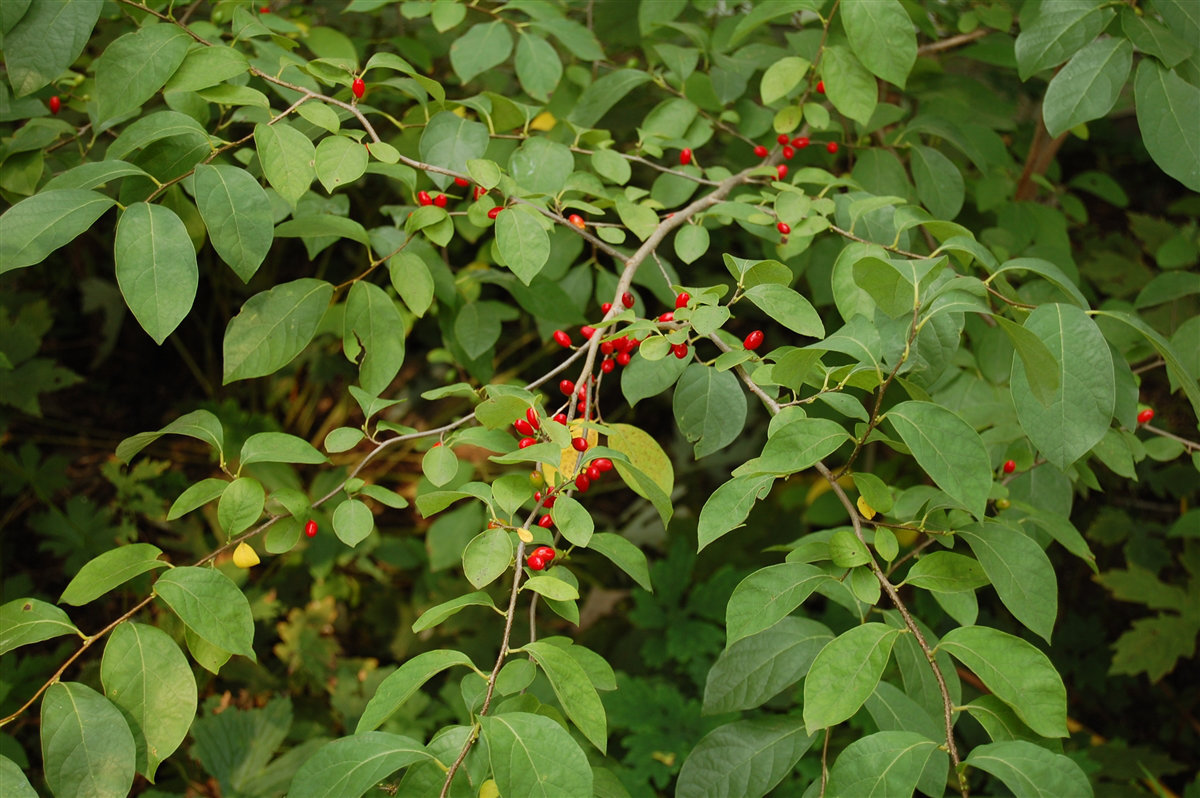By Dave Keane

Walk in the woods this time of year and you may find yourself asking what is that shrub with the red berries?
If you’re not sure what it is, scratch the bark off a twig and if you get a spicy aroma, it’s most likely a spicebush.
Description
Spicebush is a multi-stemmed deciduous shrub in the Laurel family that grows to a height of 4-12 feet. It is a very common understory plant found near streams, floodplains, and in low lying forests. It often forms dense thickets that provide excellent cover for small mammals while providing much needed shade for streams and creeks.
Spicebush produces brilliant yellow flowers in early spring prior to developing leaves. The leaves are alternate and simple, oblong or ovate with a smooth margin. The beauty of this shrub really shows itself in the fall with the leaves turning a bright golden color followed by the red drupe berries.
The young twigs are glabrous and light green and the mature bark on the trunk is gray with white lenticels. Spicebush is very common throughout the eastern United States. It is found in zones 4 through 9 from New England to Georgia and west to Michigan and Missouri.
Conservation
Spice bush is a very important plant that thrives along river banks, wetlands, and floodplains stabilizing the soil and providing shade for aquatic life. Fortunately, the mature shrubs are not a preferred meal to the white tail deer, making this shrub one of the more common plants surviving in our forests. This plant also provides nectar to native bees and pollinators in the early spring. It is the host to the Spicebush Swallowtail butterfly, whose larvae feed on the leaves of the plant. The fruit is enjoyed by American robins, northern bobwhite quail, as well as raccoons and opossums.
Cultivation
Spicebush can be propagated by seed or softwood cuttings. Cold stratify the seeds for at least four months and do not let them dry out. More commonly seen in natural settings, this plant can be used in the landscape. In order to have berries, you will need to plant both male and female plants.
You must be logged in to post a comment.